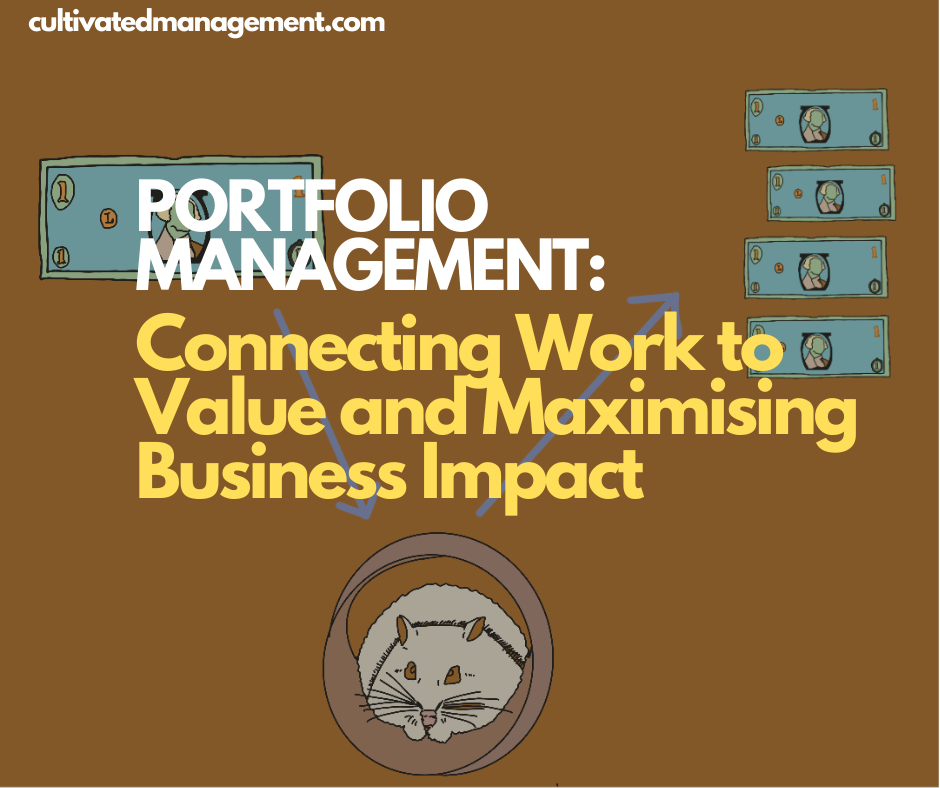
In many organisations — particularly medium to large ones — there are often talented people doing busy work that doesn’t always deliver value. It’s a monumental waste of human potential.
Equally, there are people doing work that is valuable but not directly connected to strategic goals. This work often goes unrecognised and unmanaged. Both scenarios are common and costly: teams are busy, energy is spent, but the organisation may be no closer to achieving its objectives.
One practical way to address this is through a portfolio management system.
What is a Portfolio Management System?
At its core, a portfolio management system is a structured way to collect, track, and visualise all work happening in an organisation, often organised under programmes or projects.
A good system provides:
- Visibility: Understand how work flows, where it’s stuck, and how it connects to strategic goals.
- Traceability: Link investments to work activity and measurable outcomes.
- Insights: Capture data on delivery progress, commitments, and overall performance.
- Financial oversight: Know how money is being spent and allocate resources effectively.
- Framework for delivery: Provide structure for managing large-scale initiatives.
Most organisations run several portfolios simultaneously — rolling out IT systems, launching new products, implementing platforms, or updating HR processes. Each requires investment, often both capital (CapEx) and operational (OpEx), with the expectation of a valuable return.
People in the middle of this investment-to-value chain are doing good work — but only if leaders and managers clearly connect that work to the organisation’s goals.
What is a Portfolio?
The word “portfolio” originally referred to a collection of papers carried together. In the workplace, a portfolio is a collection of ideas, projects, and actions brought together under a single, cohesive view.
Many organisations lack robust portfolio management.
Leaders often have no single view of how teams are performing or tracking against investment. As organisations scale, work naturally becomes complex. Without oversight, it’s easy to assume teams will align, share knowledge, and collaborate on their own — but that rarely happens organically.
Portfolio management is not about micromanagement – far from it. It’s about visibility, insight, and understanding, enabling informed decisions about people, resources, priorities, and outcomes. In other words "are we spending the company money wisely?".
Principles of Portfolio Management
There isn’t a single “best” approach.
Instead, I rely on principles that provide structure while remaining flexible. A good portfolio system should:
- Trace funding (investment or operational expense) to activity and out to the value it releases.
- Allow all work to be visible, regardless of methodology.
- Measure value delivered against expectations.
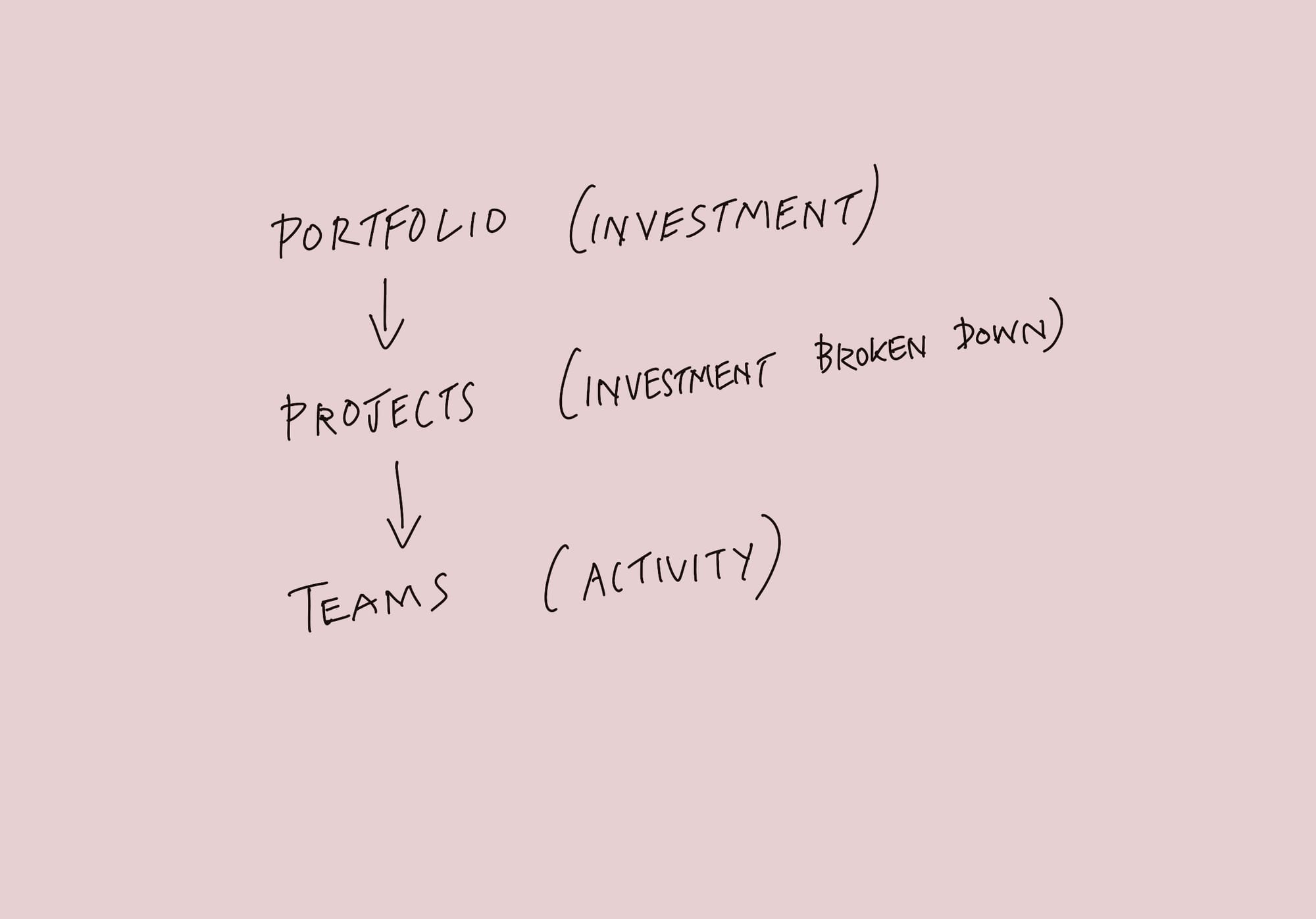
Depending on your organisation, portfolios may have multiple layers: programmes, projects, teams, or sprints – or more!
The more layers, the more complex tracking becomes. I recommend keeping it simple—ideally three levels:
- Portfolio (Funding Level) – The overall programme or initiative.
- Projects/Initiative – The valuable outcomes that are expected, promised and anticipated
- Teams – The people delivering the work.
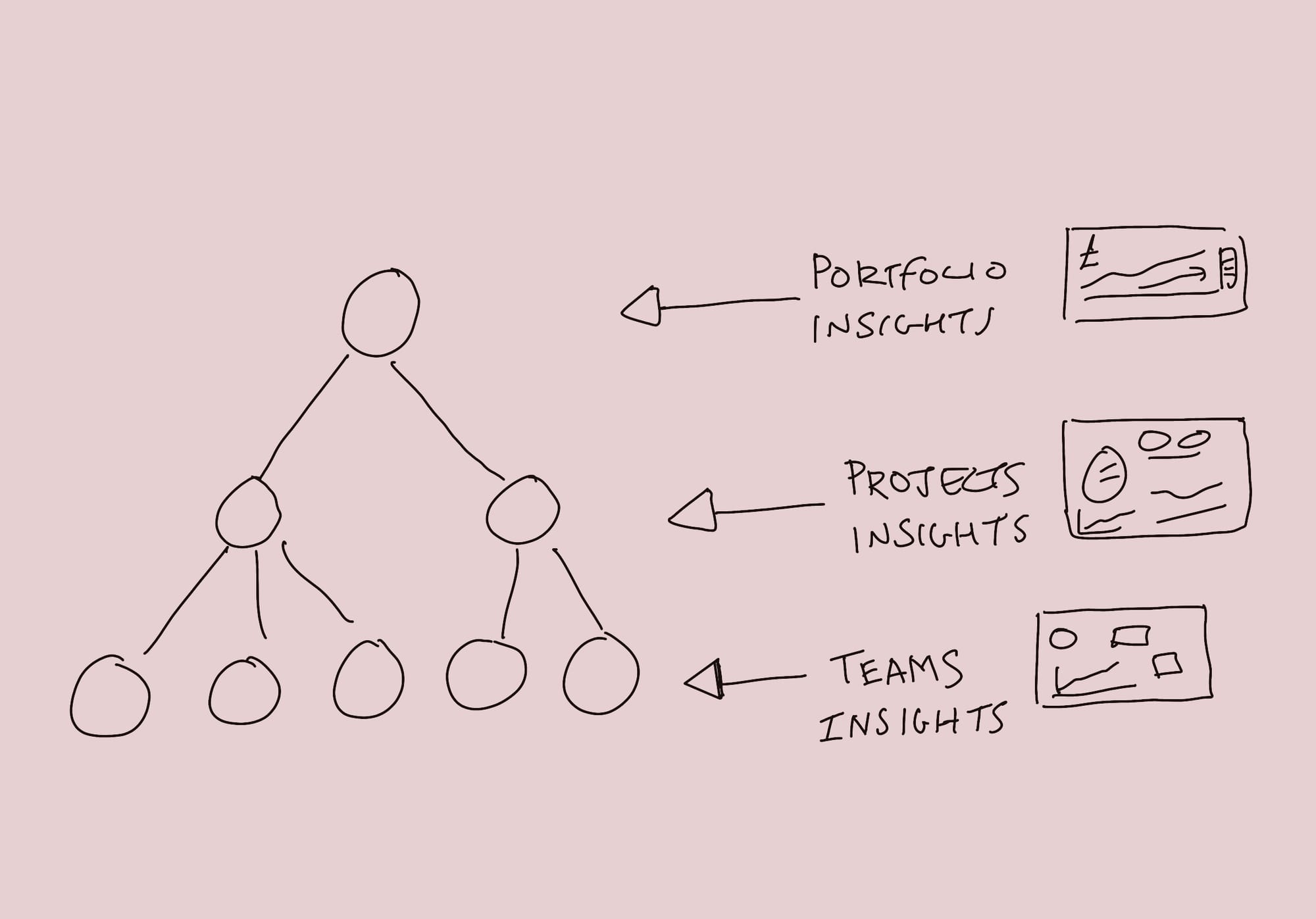
For example, rolling out a new Learning Management System could be a portfolio with dedicated funding from the business. Projects/Initiatives may include IT infrastructure, content creation, training, and communications. Teams execute these projects, generating value for the organisation.

Investment
Every project requires resources & people – i.e. Money.
Leaders must ensure this funding delivers value. Value isn’t always financial — it could be customer retention, operational efficiency, risk reduction, sustainability, license to operate or new capabilities, but typically there is some form of financial gain (uplift in revenue, reduction in cost, etc)
For instance, investing in reducing customer churn may not immediately increase revenue, but it protects long-term financial health. Environmental or sustainability initiatives may also deliver indirect financial benefits, such as improved brand reputation, staff attraction, or reduced operating costs.
Clarity is essential. Ask questions such as:
- What problem are we solving, or what opportunity are we pursuing?
- Why is this portfolio worth the investment?
- How will we measure success?
- How does it tie to overall strategy?
- What value are we releasing for the business?
Without clear answers, organisations risk wasting time, money, and energy on low-value work.
Activity
Once investment is defined, the next focus is work execution. Portfolio management should track:
- Team activity: Day-to-day tasks and progress, ensuring everyone understands how their work contributes to the bigger picture.
- Project delivery: Aggregated view of deliverables, timelines, risks, and dependencies.
- Portfolio view: High-level perspective for senior leadership on overall progress, risks, and value delivered.
All work should be updated in some kind of tracking system. This is not micromanagement of people and day to day tasks — it’s about insight, clarity, and alignment.
As teams progress their work this updates the overall portfolio initiative/project, so everyone can see how progress is being made and how their work contributes to organisational goals. Leadership can also see how investments translate into outcomes.
Value Delivered
Valuable outcomes are the ultimate measure of a portfolio’s success. Some projects release value incrementally; others deliver value only upon completion. Either way, tracking progress and measuring outcomes is essential.

Key questions to ask include:
- Are we delivering what we set out to achieve?
- Are we on track to meet goals?
- Is our investment yielding returns?
- Should we pivot, stop, or continue?
Without this insight, organisations often overspend and underdeliver.
For example, one company spent over £1 million on a software rollout with an estimated return of £54k—due to unclear goals, lack of feedback loops, and poor tracking. Not a good return on the investment.
In another organisation they spent £20+ million on a new IT system that nobody used.
A good portfolio system provides real-time insight into performance, enabling course corrections, better prioritisation, and alignment with strategy. The data coming from the portfolio system also enables conversations about investment and funding - such as do we stop the project, give the money back or keep funding
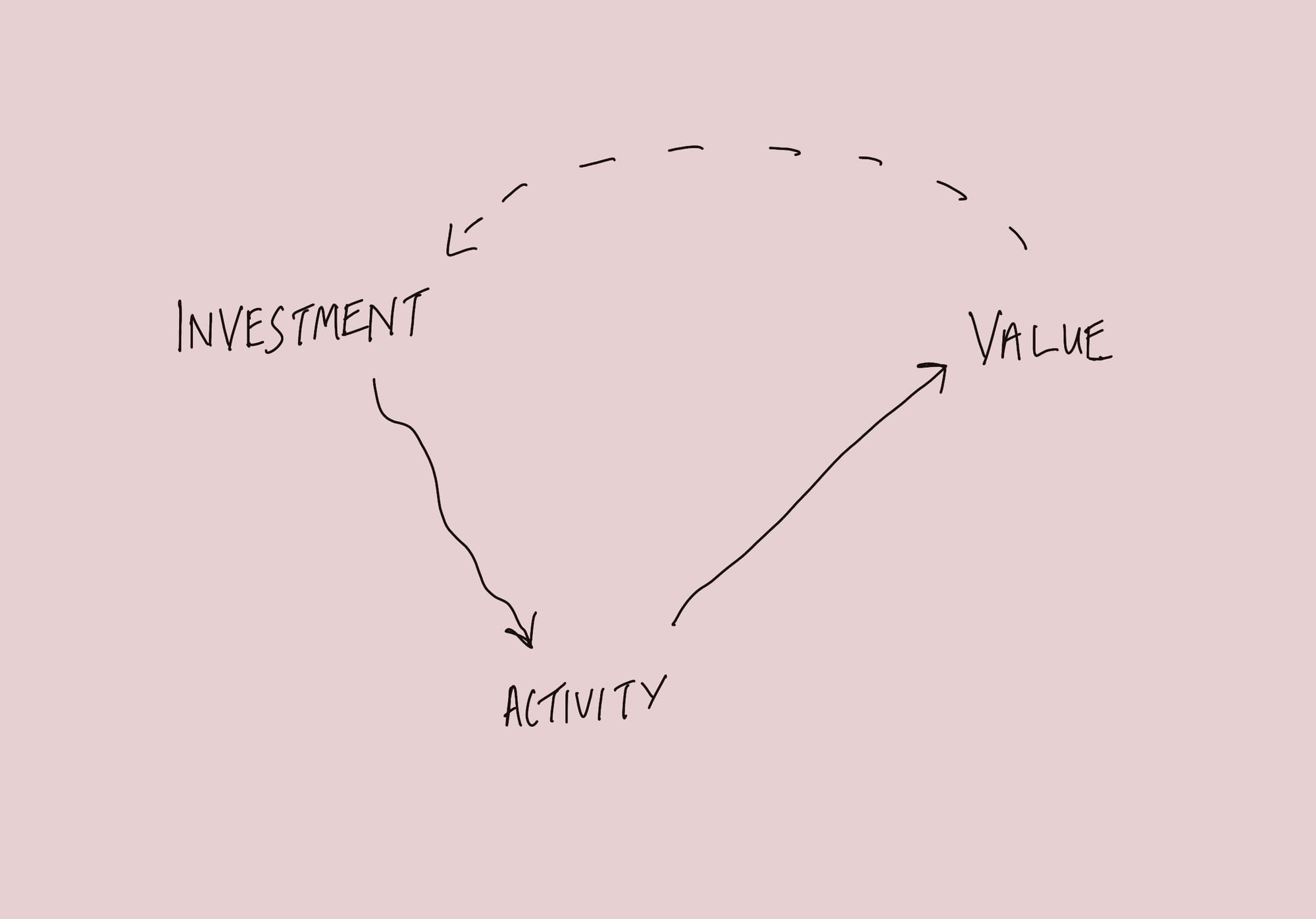
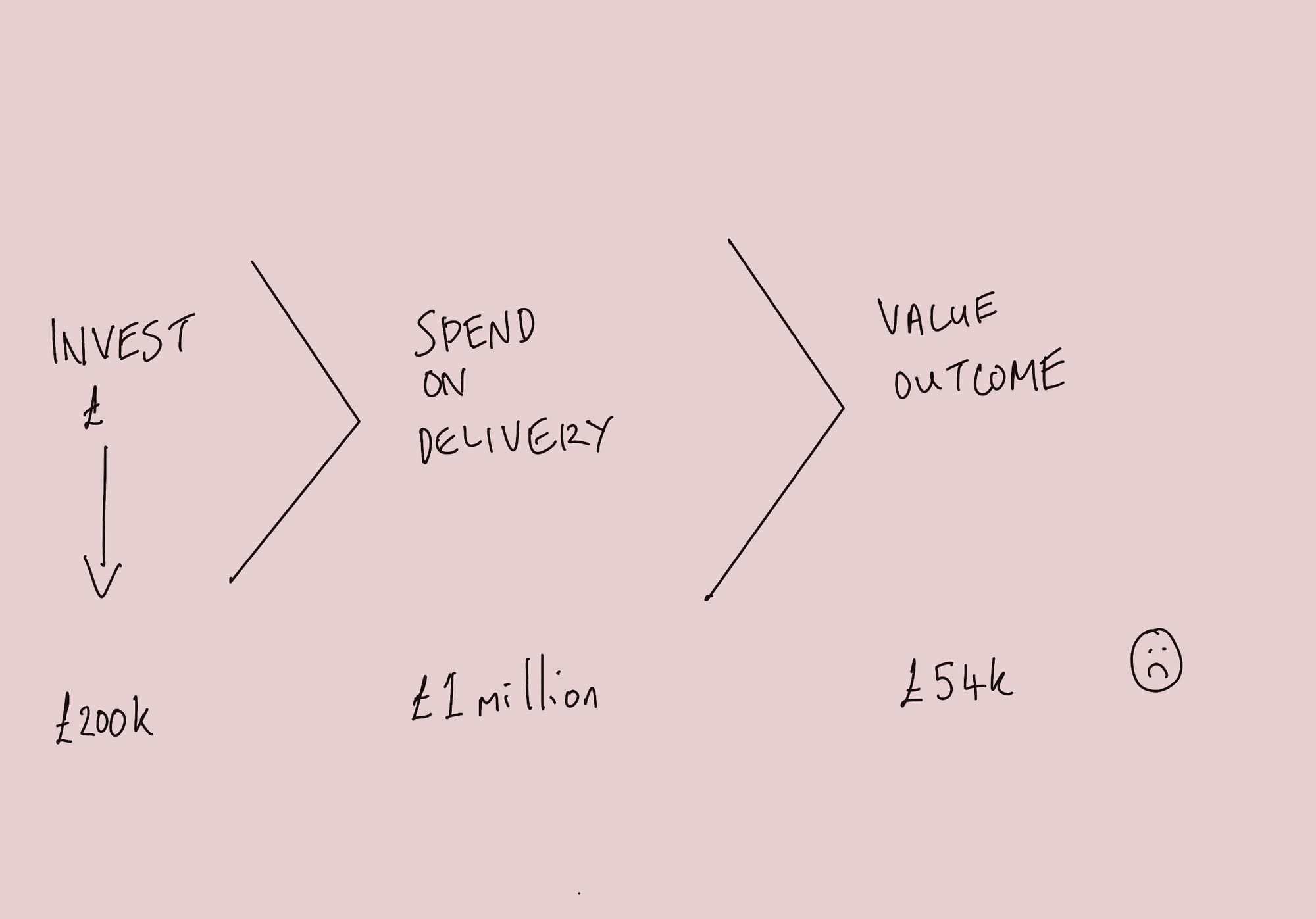
Applying Portfolio Thinking
Portfolio management is not a silver bullet. Critical thinking, strategy, and leadership are essential. However, a strong portfolio system highlights:
- Where work is misaligned with investment.
- Opportunities to pivot or redirect resources.
- Progress toward strategic goals.
Treat company investment like your own money. Ask the same questions you would for personal spending:
- What am I investing in?
- How much am I investing?
- What value will it deliver?
- How will I track progress?
If you applied this rigour to your own finances, why not apply it at work?
Key Takeaways
- Visibility is everything. Connect investment, activity, and value.
- Clarity beats complexity. Simple structures are easier to manage and track.
- Measure outcomes continuously. Track value delivered, not just activity.
- Adapt to context. Portfolio tools and methodologies should fit your organisation.
- Feedback loops matter. Continuous assessment and iteration ensure you stay on track.
A good portfolio management system ensures everyone — from team members to senior leaders — understands the connection between investment, activity, and value. Without it, organisations risk wasting resources, duplicating work, and missing strategic objectives.
Ultimately, portfolio thinking enables informed decisions, better alignment, and maximises the value of your people and investments. Done right, it creates a culture where effort translates directly into meaningful outcomes.
